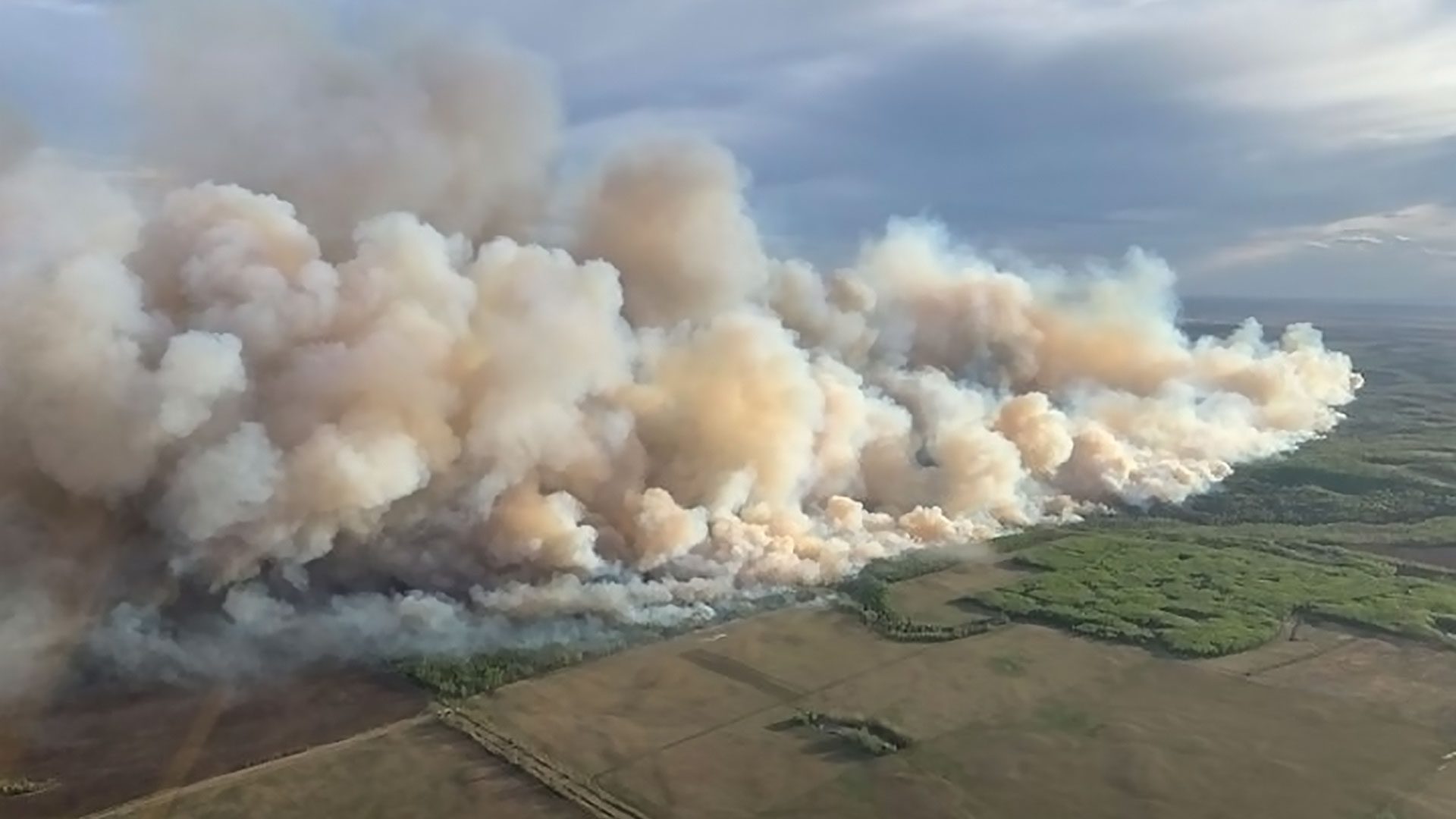The mayor of Northern Rockies Regional Municipality in British Columbia says fire crews and emergency workers have been preparing for what he’s calling is a “last stand” to protect the community from an advancing wildfire as people continue to flee.
“We did really well here, Friday night we were able to evacuate almost 3,500 people from Fort Nelson and from town proper in about six hours,” said Rob Fraser. “We were able to get the hospital folks out, the seniors out and the Elders out without any injuries and for the most part fairly smooth.”
In the latest update, the minister of Emergency Preparedness for B.C. said the winds are creating a challenge for fire crews.
“The Parker Lake wildfire, which started on May 10, is now over 5,280 hectares and is located 2.5 km west of the town of Fort Nelson,” said Bowinn Ma. “The next 48 hours will be a challenging situation for the Northern Rockies Regional Municipality given the ongoing westerly winds and extremely dry and volatile fuels in the area. We may begin to see wildfire activity later this afternoon.
“B.C. wildfire service wildfire crews and local wildfire crews and local fire departments from across the province are doing everything they can do to protect the community.”
The area has been experiencing drought – but rain is forecast on Wednesday.
The residents of Fort Nelson are driving 380 km south to Fort St. Johns – some travelled further to Prince George.
“Just as we were pulling into the city we were getting alerts on our phones and seeing on [Facebook] that an evacuation notice was put in place and shortly after that the order was put in place,” Ryan Dickie, who fled with his family to Fort St John.
“It was a bit of a panic.”
Dickie, along with Doig River First Nation local drummers, organized a drum prayer Sunday night before leaving.
“I walked away feeling more hopeful and stronger. That’s the essence we have been taught in the power of medicine that the drum provides. Being able to do that for our community in times of need is really important to use as young drummers from Fort Nelson,” he said.
Some residents stayed behind to protect their properties despite the possibility that electricity and water may be cut off.
The blaze is one of several out-of-control wildfires in Western Canada threatening nearby communities in provinces such as Alberta and Manitoba.
“The wind is going to be sustained and it is going to push the fire towards the community,” BC Wildfire’s director of operations, Cliff Chapman, warned in Sunday night’s update video about the fire threatening Fort Nelson.
“Escape routes may be compromised and visibility will be poor as the fire continues to grow.”
Alberta

Fires are also burning near Fort McMurray and Grande Prairie in Alberta.
The Regional Municipality of Wood Buffalo in northeastern Alberta has maintained an alert for Fort McMurray residents to be ready to evacuate on short notice, as the fire 16 kilometres to the southwest has reached 55 square kilometres in size.
Despite the warnings, fire officials said today that there was no immediate risks to the communities of Fort McMurray, Saprae Creek Estates, Gregoire Lake Estates, Fort McMurray First Nation
The wildfire fighting continued into the evening, according to the Regional Municipality of Wood Buffalo. Helicopters using night vision continued to work to drop water on the fire with buckets.
Smoke from the fires have prompted air-quality alerts spanning from B.C. to Manitoba.
Officials said Fort McMurray residents must be ready to flee at a moment’s notice, schools there are still open Monday.
Both the public and Catholic school divisions in Fort McMurray said they’re continuing to monitor the situation and that they understand some parents may not want to send their kids attending school right now.
Both school divisions say that provincial achievement tests that were scheduled for this week are being postponed.
Manitoba
An out-of-control wildfire in northern Manitoba forced an evacuation of some homes and cottages in Flin Flon, a community 800 km northeast of Winnipeg. The community of Cranberry Portage was also evacuated.
The province issued an evacuation order to a number of homes and cottages in the area, and is warning others nearby to be prepared to leave.
“This fire started late Thursday from dry lightening,” said Earl Simmons the director of the Manitoba Wildfire Service said Monday at a press conference regarding the massive Manitoba wildfire that began over the weekend.
The fire grew extremely quickly from 35 hectares to 35,000 hectares within a day. The fire was moving at speeds of up to 200 km an hour.
“I’ve been working in wildfire for 40 years I’ve never seen a fire move like this fire moved.
Sprinklers have been set up near structures in the area. Air tankers from Saskatchewan are also helping with suppression efforts, and 10 crews from Ontario are set to arrive early next week, Simmons said.
“Usually this time of year the soil is fairly moist and the fire will whip over the surface, but this year the soil is dry so the fire will burn deep down,” said Simmons.
“Waterbombers don’t put out fires, they help us protect some assets and we can start putting crews in once the area has been cooled by the waterbombers,” said Simmons
Simmons shared stories about large trees falling down due to their root systems being burned.
Firefighting will continue throughout the week but the fire has not moved since Saturday.
“We wanted to protect their lives and secondly protect the property,” said Simmons.
WIth files from Danielle Paradis










